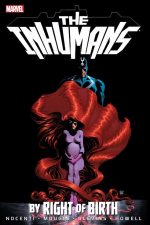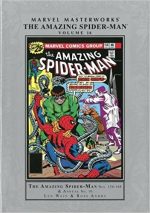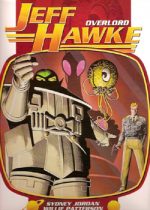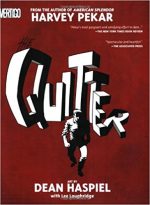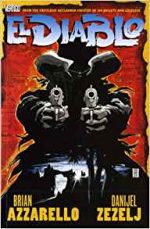
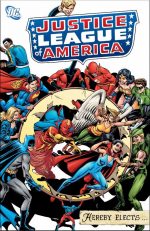
By Gardner Fox, Denny O’Neil, Len Wein, Steve Englehart, Gerry Conway, Mike Sekowsky, Dick Dillin & various (DC Comics)
ISBN: 978-1-4012-1267-4
“Just Imagine! The mightiest heroes of our time… have banded together as the Justice League of America to stamp out the forces of evil wherever and whenever they appear!â€
The moment the Justice League of America was published marks the moment when superheroes truly made comicbooks their own particular preserve. Even though the popularity of masked champions has waxed and waned many times since 1960 and other genres have re-won their places on published pages, in the minds of America – and the world – Comics means Superheroes.
The JLA signalled that men – and even a few women – in capes and masks were back for good…
When Julius Schwartz began reviving and revitalising the nigh-defunct superhero genre in 1956, his Rubicon move came a few years later with the uniting of these reconfigured mystery men into a team…
The band of heroes debuted in The Brave and the Bold #28 (cover-dated March 1960) and almost instantly cemented the growth and validity of the revived sub-genre, consequently triggering an explosion of new characters at every company producing comicbooks and spreading to the rest of the world as the decade progressed.
Originally – although Superman and Batman were included in the membership – participation had been strictly limited as editorial policy at the start was to avoid possible reader ennui and saturation from over-exposure. That ended with the first story in this collection as they joined regulars Flash, Green Lantern, Wonder Woman, Aquaman, J’onn J’onzz: Manhunter from Mars to invite expansions to the roster.
Spanning June 1961 to September 1980 this full-colour paperback compendium of classics (also available digitally) compiles and re-presents Justice League of America volume 1, #4, 75, 105-106, 146, 161 and 173-174: issues that signalled the admission of many – but not all – new members…
First addition to the team since it’s premier, Green Arrow stormed into pride of place in #4’s ‘Doom of the Star Diamond’ (by Gardner Fox, Mike Sekowsky & Bernard Sachs, and cover-dated May 1961), saving the day in a science-fiction thriller wherein a well-meaning alien exile threatens earth with destruction as part of a cunning plan to return to his own planet.
Happily. when the whole scheme goes lethally awry the Emerald Archer is on hand to sort it all out…
Black Canary enlists after a tragedy on her own world of Earth-Two resulted in the death of her husband during the annual JLA/JSA team-up. As a consequence, Dinah Drake-Lance emigrates to Earth-One, handily becoming the JLA’s resident Girl Superhero, and picking up a new – if somewhat unreliable – power in the process.
The repercussions of her move and Green Arrow losing all his wealth made Justice League of America #75 (November 1969) one of Denny O’Neil’s best, and artists Dick Dillin & Joe Giella were on top form illustrating ‘In Each Man there is a Demon!’ Here the fallout of the trans-dimensional bout found the hero-team literally fighting their own worst aspects in a battle they couldn’t win…
Crafted by Len Wein, Dillin & Dick Giordano, the “More-the-Merrier†recruitment drive continued in #105 (April 1973) wherein the Elongated Man signed up to save the day against marauding, malignant putty-men in ‘Specter in the Shadows!’
He was anonymously aided by a miraculously resurrected robotic Red Tornado who joined up in #106 (July 1973), utterly unaware that he had been reprogrammed into becoming a ‘Wolf in the Fold!’ by his malevolent creator and future-tech plunderer Thomas Oscar Morrow. Nevertheless, the Amazing Android circumvents his malignant code to save the day and join the team…
Between that triumph and the next tale, the Tornado sacrificed himself to save his comrades, so they are rather surprised when he resurrects at the beginning of Justice League of America #146 (September 1977), as Hawkgirl is finally invited to fight beside her husband Hawkman as a member in full standing.
‘Inner Mission’ – by Steve Englehart, Dillin & Frank McLaughlin – details how electronic AI entity the Construct attempts to destroy the League from within and cements the growing tradition of making the team a multi-hued army of heroes…
Long-term associate Zatanna was finally given the nod in #161 (December 1978) via ‘The Reverse-Spells of Zatanna’s Magic-Cigam’ by Gerry Conway, Dillin & McLaughlin. She seemingly turns them at first but it’s just a ploy to expose a sinister magical infiltrator…
Wrapping up the narrative delights here is a smart two-parter with a twist ending as the League try to induct mysterious vigilante Black Lightning (JLA #173-174; December 1979 and January 1980).
After much fervent debate, they decide to set the unsuspecting candidate a little task but as a vermin-controlling maniac unleashes terror upon Metropolis the ‘Testing of a Hero’ and ‘A Plague of Monsters’ (Conway, Dillin & McLaughlin) takes the old recruitment drive into a very fresh direction…
Bulking out this catalogue of Crisis challengers are an assortment of extra features including ‘JLA: Incarnations’ listing of every League iteration and every member thereof; a poster by Ed Benes depicting the team in its entirety and a blank certificate affirming your personal membership in the ranks (don’t use ballpoint pen if you’re reading the eBook edition!)
These classical compendia are a dedicated fan’s delight: an absolute gift for modern readers who desperately need to catch up without going bankrupt. They are also perfect to give to youngsters as an introduction into a fabulous world of adventure and magic…
© 1961, 1969, 1973, 1977, 1978, 1979, 1980, 2006 DC Comics. All Rights Reserved.


